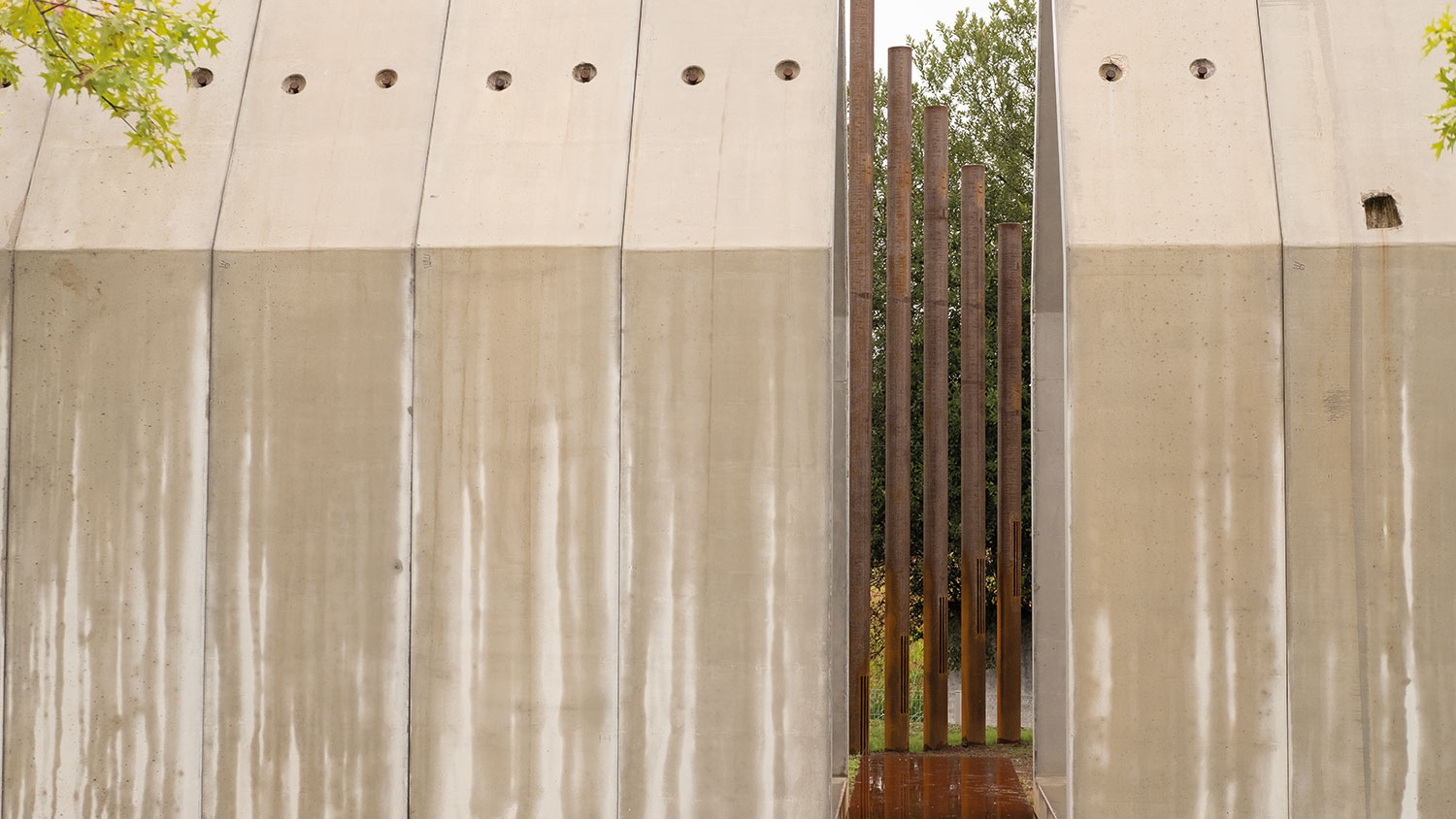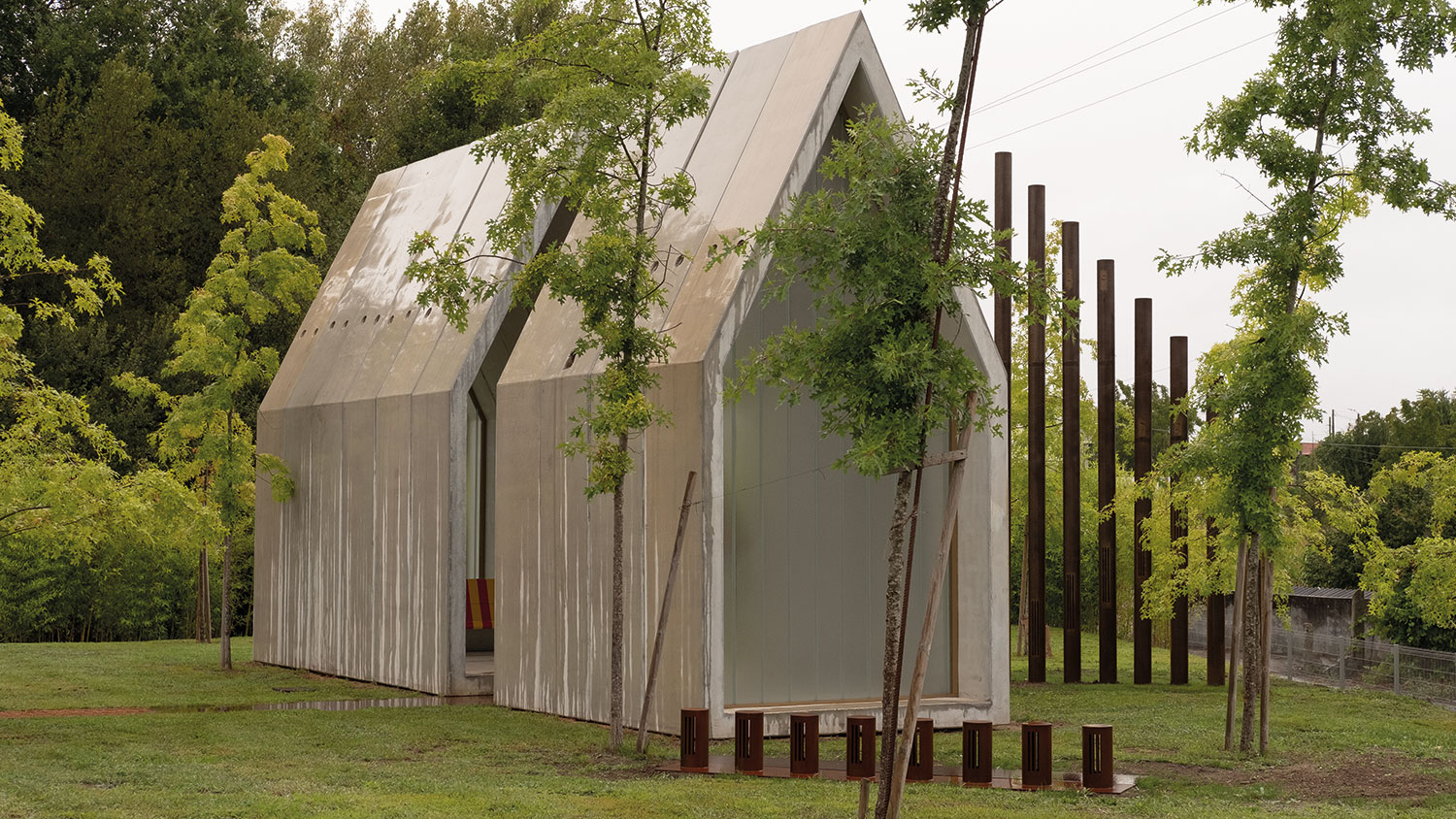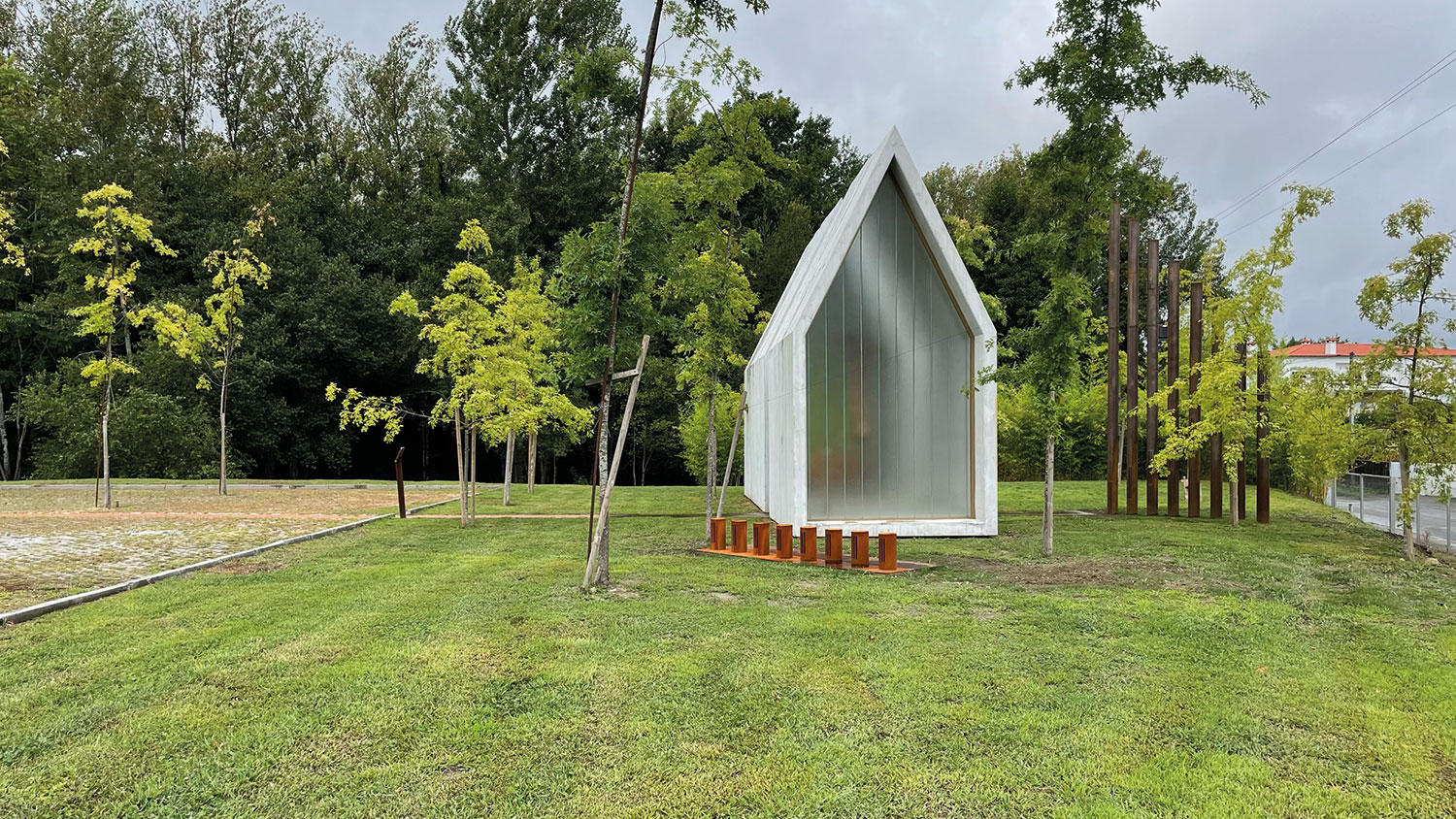
Steel tubes, loudspeakers, amplifiers, media players.
Unveiled in September 2021 at the Teresa Gonçalves Gomes garden, dstgroup campus, Palmeira, Braga. Commissioned by José Teixeira.
Steelwork, electricity and construction: Ana Pinheiro, Ana Araújo, Artur Oliveira, Aurélio Silva, Christophe Silva, Franclim Martins, Hilário Pinto, Ivanildo Cruz, João Pereira, João da Silva, Jorge Bastos, José Manuel Sousa, Liliana Fernandes, Luís Mendonça, Manuel da Silva, Manuel Costa, Marcos Lopes, Mário Cunha, Maurício Sousa, Paulo Ferreira, Ricardo Portela, Sérgio Afonso, Severino Moreira, Thomas Pinheiro, Tiago Martins, Tiago Araújo. Coordination of the voice recordings: Raquel Sousa. Voices: Alfredo Cardoso, Amaro Gonçalves, Amélia Cerdeira, Ana Alves, Ana Varandas, Ana Vitorino, André Carmo, Ângela Fernandes, Bohdan Smutok, Carla Almeida, Carla Costa, Carlos Caldas, Cátia Lopes, Chris Ribeiro da Silva, Filipe Manso, Francisco Marinho, Franclim Martins, Germana Rei, Gonçalo Matos, Inês Núncio, Isabel Pinto, Isaura Rodrigues, Joana Reis, Jorge Gonçalves, José Alberto, Luís Bastos, Mafalda Rodrigues, Manuel Jesus, Maria Isabel Magalhães, Miguel Pinho, Miguel Rodrigues, Mike Macedo, Nuno Duarte Silva, Nuno Neves, Patrícia Pinto, Raul Junqueiro, Ricardo Lopes, Ricardo Portela, Rita Gomes, Roberta Gonçalves, Rui Alves, Sérgio Fernandes, Teresa Araújo, Teresa Bastos, Vanderley Rodrigues de Araújo, Xavier Martin.

The context for an installation often includes architecture, nature, people and other agents that inhabit a space but may also include other artworks. That was the case here, a permanent installation explicitly related to a garden, a building, and its contents. The garden is on the dstgroup campus, and several artworks are implanted there. One of these is a sculpture by Alberto Péssimo of Christ on the cross. This sculpture is housed in a chapel-like building erected from concrete modules in what is now called the “meditation spot” of the garden. This commission started from the will to add to this corner of the garden something more ecumenical by creating a work that could relate with the building and its contents but could also engage in dialectical tension with them. Researching the etymological root of ecumenism, we discovered that oikoumenē — a classic Greek word that arrived to us through Latin meaning “civilisation” or the “inhabited world” — can also be interpreted as designating a common home, a shared space that we all inhabit and simultaneously build. In this sense, the word carries an interesting relationship with ecology, also derived from the Greek root oikos.
All the inhabitants of this planet, of this common home, share resources and affect one another’s well-being. We all share a world that is always incomplete and only realises itself through our actions in it. This world exists with and through us, between the sensorial and the essential, between appearance and being. Despite its materiality, it is difficult to apprehend fully because it is boundless, permeable, and seems illusory: our world is spectral, partially real and objective, partially irreal and subjective.
Humans are also spectral beings. Each person is a subjective and permeable self-construction that creates a personal, idiosyncratic, and unique world that, because it is porous, intersects with those of others and becomes something shared with all other beings and things that inhabit it.
Aware of this diversity, an ecumenical vision of the world and our position in it inevitably becomes an ecological vision aware of the immense variety of temporal and spatial scales in which the world exists and the small gamut of scales where human experience is developed.
An ecumenical vision perceives the world as a space of transitions between scales and phenomena that exist as outcomes of our perception in a dynamic field teeming with currents and waves, built by humans and non-humans alike, by nature and technology, by the cognitive and the non-cognitive, by beings and things.
This work was developed from a territorial relationship with the garden; an architectural relationship with the buildings and artworks; and a spectral and ecological relationship with the diversity of its inhabitants, in particular the hundreds of workers of dstgroup, many of whom contributed snippets of their voices to the construction of this piece.
The architectural relationship is itself spectral, developed through a relationship of volumes with the chapel, the walkway and the garden. The two sets of steel tubes outline a volume that mirrors and intersects the existing cross-shaped configuration of the chapel. This volume is presented as an outline filled with sound rather than matter, creating a formal relationship with the meditation spot, an echo, a reflection, and further development of its form.

Thank you to Helena Mendes Pereira, Luís Arandas.